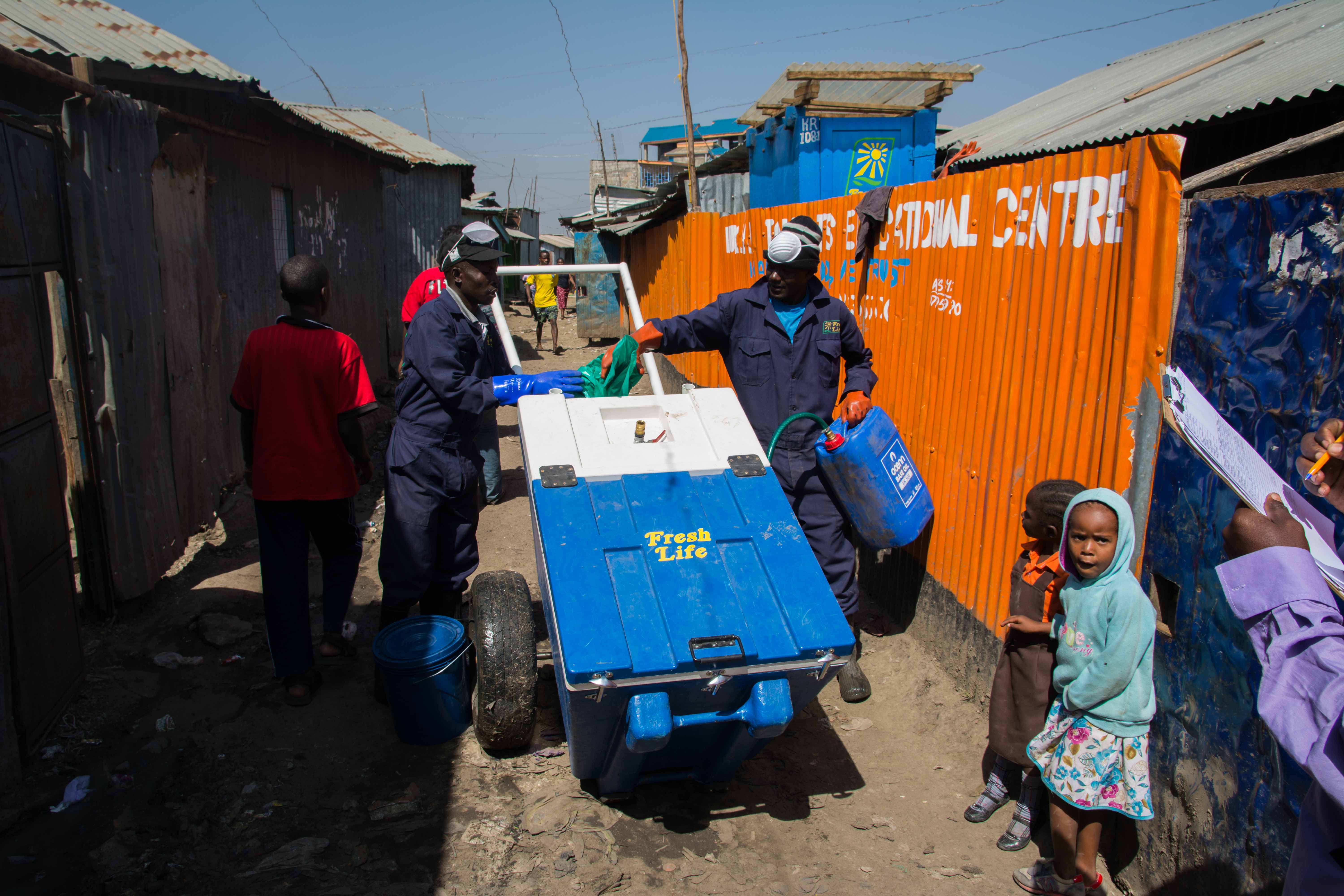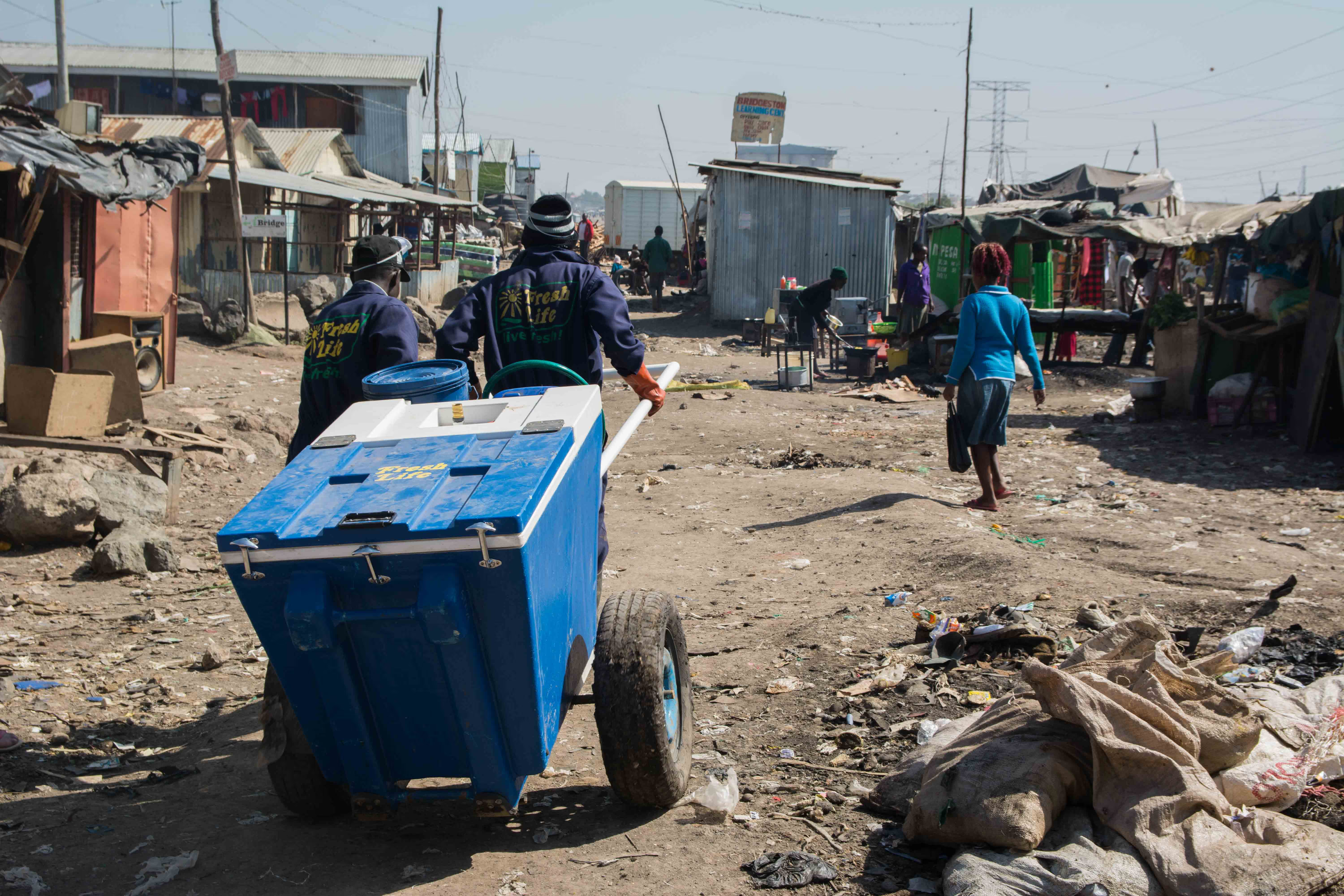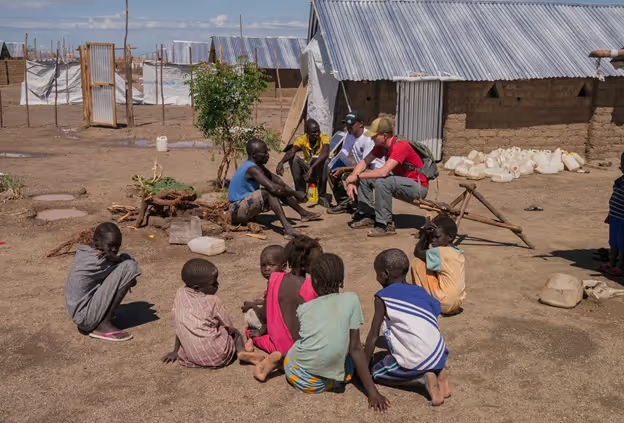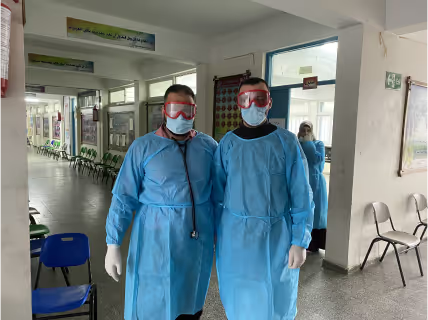Integrating social enterprises into emergency faecal sludge management

Project overview
GOAL and Sanergy will develop a Faecal Sludge Management (FSM) bulk consolidation container that enables bag-based sanitation systems to be easily and safely disposed of in the early stages of an emergency.
Project solution
This project offers [specific solution or intervention] to tackle [challenge]. By implementing [strategies, tools, or innovations], the project aims to achieve [desired outcomes]. The approach is designed to [specific actions or methods] to bring about meaningful change in [community, region, or issue area].
Expected outcomes
This project aims to achieve [specific outcomes], such as [measurable results, improvements, or changes]. The expected impact includes [benefits to the target community, advancements in research or innovation, or long-term effects]. By the end of the project, we anticipate [specific changes or milestones] that will contribute to [broader goals or objectives].
GOAL and Sanergy are working together to develop suitable sanitation solutions for urban emergencies where both time and space are limited.
GOAL and Sanergy will develop a Faecal Sludge Management (FSM) bulk consolidation container that enables bag-based sanitation systems to be easily and safely disposed of in the early stages of an emergency.
This system could be quickly deployed to locally consolidate and contain excreta, enabling it to be easily transported to a final disposal point, limiting potential negative health effects.
The project will also explore the link between humanitarian responders (such as GOAL) and social enterprises (such as Sanergy), with the aim to define possible linkages in emergency responses, as well as the gradual handover from humanitarian agencies to social enterprises as a reliable exit strategy.
WHAT IS THE HUMANITARIAN NEED?
Rapid on-set urban emergencies caused by man-made or natural disasters often lead to large amounts of people taking shelter in relatively small zones. These areas generally lack the necessary basic infrastructures to accommodate these sudden arrivals. Adequate sanitation facilities are essential to prevent the common water-borne diseases that accompany crowded living conditions; however the ability to install latrines is limited due to spatial restrictions.
WHAT IS THE INNOVATIVE SOLUTION?
The innovation will centre around the technical development of Bulk Consolidation Containers (BCCs) to contain faecal sludge, as well as the processes, incentives and partnerships needed in order to first collect the faecal bags and then to process the sludge in a sustainable, safe and environmentally friendly manner.
The BCC must be easily deployable, transportable and also release gasses while containing odours to make it more user acceptable. This is a product innovation, while also aiming to become a paradigm shift in sanitation solutions for the populations in urban emergency situations.
Over 18 months the project plans to move through the third and fourth stages of the innovation process, building on the recognition of the sanitation issue and invention of a potential solution, to develop the innovation from a practical perspective and possibly test it in a real life situation.
The innovation will build on NGO experience in emergency response, Sanergy’s experience in faecal sludge management and the existing practice of ad-hoc flying toilets in order to develop a sustainable and safe solution to sanitation needs in an urban emergency situation.
WHAT ARE THE EXPECTED OUTCOMES?
- Practitioner networks and preparedness plans developed
- Incentive options for households during early stage of emergencies developed through practitioner networks
- Rapidly deployable BCC developed
- Standards and guidelines for hygienic use of transfer station developed
Project delivery & updates
Stay up to date with the latest developments from this project. Here, you will find details on what has been delivered, resources created, and regular updates as the project progresses. Access key documents, reports, and other materials to see how the project is making an impact.
Resources
Report
LEARN MORE



